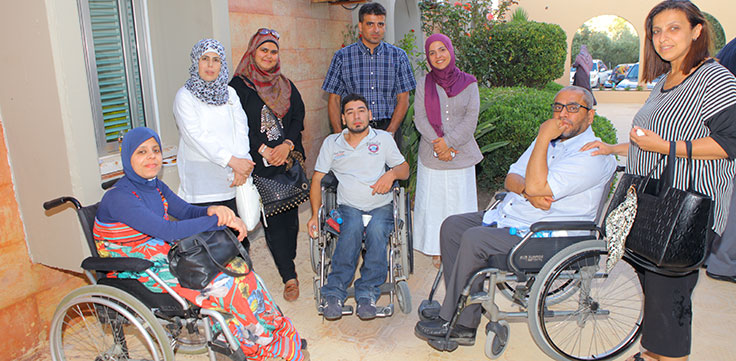SCI & UTI
Spinal Cord Injures & Urinary Tract Problems
Collective initiative with Imam Sadr Foundation (ISF), Norwegian Aid Committee (Norwac), The Lady Fâtemah (a.s.) Charitable Trust & Al-Musawat.
What is that/it/SCI?
In a complete Spinal Cord Injury (SCI), there are no signals below the point of injury between the brain and the body—no sensation and no voluntary movement. A person with an incomplete injury may be able to move one limb more than another, may be able to feel parts of the body that cannot be moved, or may have more functioning on one side of the body than the other. With the advances in acute treatment of SCI, incomplete injuries are becoming more common.
Besides a loss of sensation or motor functioning, SCI produces other changes. There can be bowel and bladder dysfunction. Men may have their fertility affected, while women’s fertility is generally not affected. Very high injuries (C1, C2) can result in a loss of many involuntary functions including the ability to breathe, necessitating breathing aids such as mechanical ventilators or diaphragmatic pacemakers. Other effects of SCI may include low blood pressure, inability to regulate blood pressure effectively, reduced control of body temperature, inability to sweat below the level of injury, and chronic pain.
Urinary Tract Infections UTIs in patients with SCI develop as a result of neurogenic bladder and the need for catheterization. Pathogenetic factors include bladder over distention, vesicoureteral reflux, high-pressure voiding, large post voiding residual volume, stones in the urinary tract, and outlet obstruction. Patients with SCI develop UTIs with microorganisms that form dense biofilms on the bladder wall; thus, these infections are difficult to eradicate. Organisms that commonly cause infections include Proteus, Pseudomonas, Klebsiella, Serratia, and Providencia species, along with enterococci and staphylococci. Approximately 70% of infections are poly-microbial. Most patients become bacteriuric by 30 days that is a convenient dividing line between short- and long-term catheterization.
Solution: Today, thanks to the many different styles, methods, materials, and contributions to the practice of urological catheterization, those needing to cath are able to enjoy a lifestyle free of limitations posed by self-cathing. Today’s catheter user’s options are a far cry from the wooden tube or rolled up palm leaves of our ancestors.
Action: As a consequence, a new project is launched in Lebanon at ISF medico-social and physiotherapy centre in Derdghayyah (casa of Tyr), focusing on the consequences of urinary dysfunction, as these represent the most severe challenges both for morbidity, mortality and quality of life. This requirement is mostly found in the southern parts of Lebanon. This Centre is not only a crossroad in the south at about 20 minutes’ drive to Beint jbeil, Tyr, Merjouen, Sayda, and Nabatye; but also is a well-built premises that is almost ready to accommodate the personnel and the equipment of this project.
The medical assessment will include:
• A standardized questionnaire and data sets (ISCOS).
• All patients will be examined with pressure recording of the bladder during filling (cystometry), as per (ICS).
• Ultrasound examination with main objective to assess renal Morphology and complications like hydronephrosis and nephrolithiasis. The bladder will be examined for cystolithiasis.
• After initial assessment, all patients will receive an individual plan and recommendation for follow-up by specialized nurses and peer consultants.
• All patients will be examined with pressure recording of the bladder during filling (cystometry), as per (ICS).
• Ultrasound examination with main objective to assess renal Morphology and complications like hydronephrosis and nephrolithiasis. The bladder will be examined for cystolithiasis.
• After initial assessment, all patients will receive an individual plan and recommendation for follow-up by specialized nurses and peer consultants.
View more


